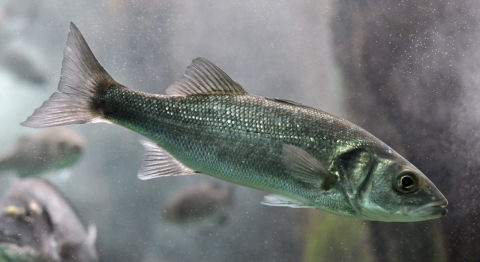
Leduc, A., Zatylny-Gaudin, C., Robert, M., Corre, E., Le Corguille, G., Castel, H., Lefevre-Scelles A., Fournier V., Gisbert E., Andree K.B. and Henry, J. (2018). Dietary aquaculture by-product hydrolysates: impact on the transcriptomic response of the intestinal mucosa of European seabass (Dicentrarchus labrax) fed low fish meal diets. BMC Genomics, 19(396), 1–20. https://doi.org/10.1186/s12864-018-4780-0
Aquaculture production is expected to double by 2030, and demands for aquafeeds and raw materials are expected to increase accordingly. Sustainable growth of aquaculture will require the development of highly nutritive and functional raw materials to efficiently replace fish meal. Enzymatic hydrolysis of marine and aquaculture raw materials could bring new functionalities to finished products. The aim of this study was to determine the zootechnical and transcriptomic performances of protein hydrolysates of different origins (tilapia, shrimp, and a combination of the two) in European seabass (Dicentrarchux labrax) fed a low fish meal diet (5%), for 65 days. Results were compared to a positive control fed with 20% of fish meal. Growth performances, anterior intestine histological organization and transcriptomic responses were monitored and analyzed. Dietary inclusion of protein hydrolysates in the low fish meal diet restored similar growth performances to those of the positive control. Inclusion of dietary shrimp hydrolysate resulted in larger villi and more goblet cells, even better than the positive control. Transcriptomic analysis of the anterior intestine showed that dietary hydrolysate inclusion restored a pattern of intestinal gene expression very close to the pattern of the positive control. However, as compared to the low fish meal diet and depending on their origin, the different hydrolysates did not modulate metabolic pathways in the same way. Dietary shrimp hydrolysate inclusion modulated more metabolic pathways related to immunity, while nutritional metabolism was more impacted by dietary tilapia hydrolysate. Interestingly, the combination of the two hydrolysates enhanced the benefits of hydrolysate inclusion in diets: more genes and metabolic pathways were regulated by the combined hydrolysates than by each hydrolysate tested independently.
Protein hydrolysates manufactured from aquaculture by-products are promising candidates to help replace fish meal in aquaculture feeds without disrupting animal metabolism and performances.
BOREA contact: Joël HENRY, joel.henry@unicaen.fr
